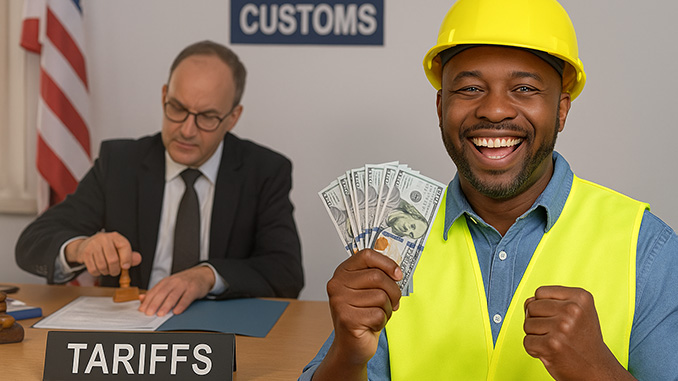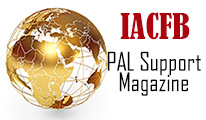
Amid growing public debate about stimulus and redistribution, the idea of “tariff checks” — rebate payments to citizens funded by tariff revenues — has surfaced as a bold proposal. Proponents say it could compensate Americans for price inflation and collect revenue for debt reduction; critics warn it’s economically risky, legally dubious, and inflationary. Below is a balanced look at what’s being proposed, who supports it, how much is on the table, and what it means for the average citizen.
What Are “Tariff Checks”?
A “tariff check” (sometimes called a “tariff dividend” or “tariff rebate”) is a proposed payment to citizens funded by government revenue from tariffs (import duties). The idea is that since many Americans pay higher prices because of tariffs, they should receive a share of the revenue collected.
In effect, it’s a form of redistribution: importers pay extra cost via tariffs, which passes to consumers, and then the government returns some of the proceeds back in the form of checks. It’s similar in spirit to energy dividends (as used in carbon tax proposals) or wealth transfers derived from specific revenue streams.
Proponents & Legislative Voices
Some of the most visible voices pushing the tariff check concept include:
-
Donald Trump — He has publicly floated checks in the $1,000 to $2,000 range for Americans, funded by tariff revenues, describing them as a “dividend to the people.”
-
Senator Josh Hawley — Introduced the “American Worker Rebate Act,” proposing rebates from tariff revenue, starting with a floor amount (e.g. $600) per adult and child.
-
Representative Ro Khanna (D-CA) — Proposed $2,000 payments to those making under $100,000, framing it as compensation for tariffs harming households. Newsweek
-
Scott Bessent (Treasury Secretary) — Estimates that customs and tariff revenue from Trump’s current tariff program could reach or exceed $500+ billion annually. Reuters
While these voices have promoted the idea, it’s important to note that no tariff check program is currently law or in effect — all proposals are contingent upon Congressional action and legal authority.
How Much Revenue Has Been Collected (So Far)
To understand feasibility, we need to look at what tariff revenues are actually generating:
-
The U.S. has collected about $215 billion in tariff revenue in 2025 so far. KATU
-
Recent government statements suggest that tariff collections could eventually surpass $500 billion per year under current policies. Reuters
-
Treasury and customs data reflect volatile daily collections; official figures from Customs & Border Protection show that average daily customs duties (a form of tariff) in recent months have hovered around $200-$300 million/day.
-
Analysts caution that headline projections (e.g. $1 trillion per year) are optimistic and often don’t account for reduced import volume due to rising prices or demand suppression.
In short: while hundreds of billions in tariff revenue are flowing, turning that into widespread checks for citizens is not straightforward.
Pros & Cons of Tariff Checks
✅ Potential Advantages
-
Compensation for Inflation / Tariff Burden
Proponents argue that tariffs often raise consumer prices, and a rebate gives back some of what is paid. -
Political Appeal & Popularity
Tariff checks can be framed as a populist policy — returning revenue to “everyday Americans.” -
Revenue Source Without Borrowing
Because the funds come from tariffs and not new taxes or debt, supporters see this as a less inflationary way to distribute money. -
Incentive for Import Reduction
If consumers know tariffs lead to checks, it may encourage buying domestic goods — aligning consumption behavior with protectionist aims.
⚠ Criticisms & Risks
-
Inflationary Effects
More money in consumers’ pockets may further heat inflation, particularly if spending increases demand in constrained supply environments. -
Efficiency & Deadweight Loss
Tariffs can distort trade, raise costs for consumers and downstream industries, and reduce economic efficiency. Cato Institute+2Financial Connections+2 -
Revenue Volatility / Uncertainty
Tariff revenue depends on import volume. If higher tariffs reduce imports, revenue may decline — making rebate payments less sustainable. -
Legal & Constitutional Hurdles
Questions exist over whether the executive or Treasury can legally allocate tariff revenue for citizen payments without specific Congressional appropriation. -
Unequal Benefit / Distribution Issues
Flat rebate checks may not adequately consider income levels, household size, or regional differences in tariff impact. -
Retaliatory Trade & Global Tension
Tariff policies can spark trade retaliation, which may hurt exports and foreign investment.
Feasibility & What’s Holding It Up
Even with momentum and rhetoric, tariff checks face major roadblocks:
-
Need for Congressional Legislation: A tariff check program would require new laws, appropriation authority, and detailed design (eligibility, amounts, timing).
-
Supreme Court / Legal Review: Some current tariffs are already challenged legally, and expanding their use as a funding mechanism may invite more litigation.
-
Economic Calibration: Designing checks that don’t worsen inflation, manage deficits, or distort trade policy is complex.
-
Budget & Debt Priorities: Many leaders argue that tariff revenue should first go to debt reduction, not new spending.
-
Public & Expert Skepticism: Many economists and fiscal conservatives dismiss rebate checks funded by tariffs as gimmicky or inefficient.
Why Brokers & Commercial Finance Professionals Should Care
Tariff checks may seem like a political headline, but they have real implications in the commercial finance world:
-
Consumer spending shifts: If checks go out, consumer demand may temporarily rise, benefiting some industries — and potentially increasing invoice volume for factoring.
-
Business liquidity tensions: Tariff ripple effects on supply chains and margins might drive more firms to seek cash flow solutions via factoring.
-
Opportunity to educate clients: As a factoring broker, you can position yourself as knowledgeable about how tariff policies impact cash flow, trade, and working capital stress.
-
Macro indicator for credit tightening: Political reliance on tariffs and rebate plans may signal stress in traditional fiscal tools (borrow/deficit), which could tighten credit markets and increase demand for alternative financing.
Turn “Tariff Checks” Into Traffic for Your Blog
For factoring brokers, trending national stories like “Tariff Checks” are golden opportunities to build visibility online. Every time major financial or economic headlines break, business owners go searching for explanations — and you can provide them. Posting short, educational articles or commentary on your WordPress blog about tariff policy, trade issues, or small business impacts helps establish you as a trusted financial voice. Add your insights on how these economic shifts affect local businesses’ cash flow, and link your articles back to your social media posts and LinkedIn profile.
By publishing timely, relevant content, you’ll drive more traffic to your website, attract small business readers, and build credibility with potential clients and referral partners. In short, while politicians debate who deserves a “tariff check,” you can turn the conversation into a steady stream of new visitors, connections, and leads — the real dividend of being an informed factoring professional.

